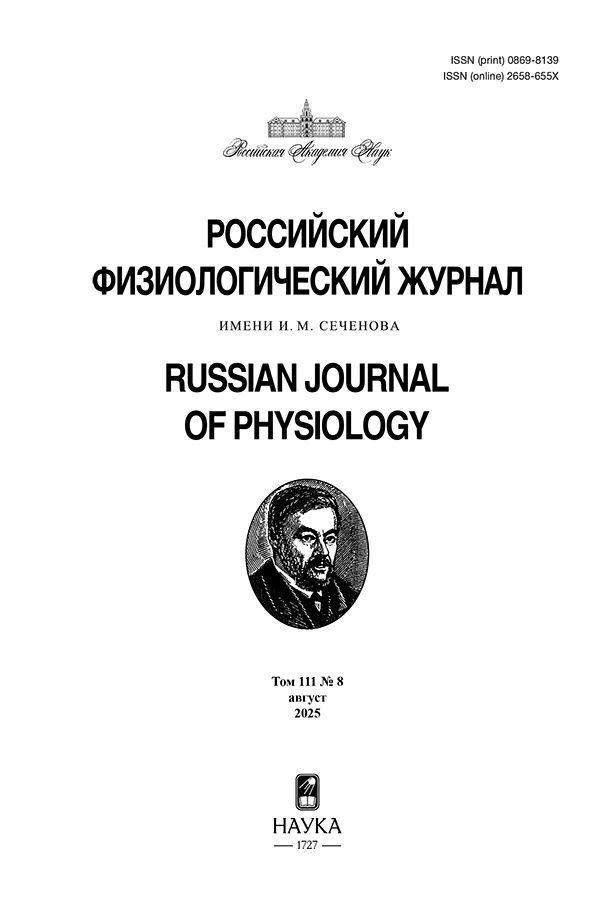Акустический стартл-рефлекс крыс Wistar. Методическая разработка и проверка в эксперименте
- Авторы: Семенов Д.Г.1, Беляков А.В.1, Чихман В.Н.1, Солнушкин С.Д.1
-
Учреждения:
- Институт физиологии им. И.П. Павлова РАН
- Выпуск: Том 111, № 1 (2025)
- Страницы: 183-192
- Раздел: МЕТОДИЧЕСКИЕ СТАТЬИ
- URL: https://innoscience.ru/0869-8139/article/view/682959
- DOI: https://doi.org/10.31857/S0869813925010121
- EDN: https://elibrary.ru/UJEVGF
- ID: 682959
Цитировать
Полный текст
Аннотация
Естественный рефлекс вздрагивания, характерный как для животных, так и для человека, представляет собой короткую и интенсивную защитную реакцию в ответ на сильный внезапный внешний раздражитель. В экспериментах этот рефлекс часто запускают коротким звуковым раздражителем (акустический стартл-рефлекс – АСР). Амплитуда АСР и степень ее зависимости от модулирующих факторов, таких как предшествующий слабый стимул (препульс), служат маркерами состояния сенсомоторной регуляции и широко используются в нейропсихиатрии и нейрофизиологии для оценки нарушений психических функций. Величина амплитуды АСР является критическим фактором оценки, при этом точность ее определения зависит от учета многих технических условий: конструкции экспериментальной установки, типа и расположения механо-электрического датчика, метода оцифровки и представления первичных данных, протокола эксперимента и т. д. В данной статье описывается методологическая разработка для измерения АСР и его препульсового торможения (ППТ), которая включает в себя оригинальную рабочую камеру, аппаратное и программное обеспечение, а также оптимальный протокол тестирования. В ходе валидации методики на группе аутбредных крыс (Wistar) было обнаружено, что: (1) методика позволяет оценить гетерогенность группы по амплитуде АСР и провести соответствующую фенотипическую кластеризацию животных и (2) повторное, через 7 дней, тестирование AСР и ППТ у одних и тех же животных не нарушает их первоначальной кластеризации и существенно не изменяет измеряемые параметры. Эти наблюдения позволяют считать методологию применимой для последовательного тестирования одной группы животных до и после экспериментального воздействия с учетом зависимости результата от кластерной принадлежности, определенной в ходе первого теста.
Полный текст
Об авторах
Д. Г. Семенов
Институт физиологии им. И.П. Павлова РАН
Автор, ответственный за переписку.
Email: dsem50@rambler.ru
Россия, Санкт-Петербург
А. В. Беляков
Институт физиологии им. И.П. Павлова РАН
Email: dsem50@rambler.ru
Россия, Санкт-Петербург
В. Н. Чихман
Институт физиологии им. И.П. Павлова РАН
Email: dsem50@rambler.ru
Россия, Санкт-Петербург
С. Д. Солнушкин
Институт физиологии им. И.П. Павлова РАН
Email: dsem50@rambler.ru
Россия, Санкт-Петербург
Список литературы
- Koch M (1999) The neurobiology of startle. Progress Neurobiol 59(2): 107–128. https://doi.org/10.1016/s0301-0082(98)00098-7
- Gómez-Nieto R, Hormigo S, López DE (2020) Prepulse Inhibition of the Auditory Startle Reflex Assessment as a Hallmark of Brainstem Sensorimotor Gating Mechanisms. Brain Sci 10(9): 639. https://doi.org/10.3390/brainsci10090639
- Graham FK (1975) Presidential Address, 1974. The more or less startling effects of weak prestimulation. Psychophysiology 12(3): 238–248. https://doi.org/10.1111/j.1469-8986.1975.tb01284.x
- Zheng A, Mann RS, Solaja D, Allman BL, Schmid S (2024) Properties of the Caudal Pontine Reticular Nucleus Neurons Determine the Acoustic Startle Response in Cntnap2 KO Rats. J Integrat Neurosci 23(3): 63. https://doi.org/10.31083/j.jin2303063
- Braff DL, Light GA, Ellwanger J, Sprock J, Swerdlow NR (2005) Female schizophrenia patients have prepulse inhibition deficits. Biol Psychiatry 57: 817–820. https://doi.org/10.1016/j.biopsych.2004.12.030
- Ahmari SE, Risbrough VB, Geyer MA, Simpson HB (2012) Impaired sensorimotor gating in unmedicated adults with obsessive compulsive disorder. Neuropsychopharmacology 37: 1216–1223. https://doi.org/10.1038/npp.2011.308
- Cheng CH, Chan PS, Hsu SC, Liu CY (2018) Meta-analysis of sensorimotor gating in patients with autism spectrum disorders. Psychiatry Res 262: 413–419. https://doi.org/10.1016/j.psychres.2017.09.016
- Pineles SL, Blumenthal TD, Curreri AJ, Nillni YI, Putnam KM, Resick PA, Rasmusson AM, Orr SP (2016) Prepulse inhibition deficits in women with PTSD. Psychophysiology 53: 1377–1385. https://doi.org/10.1111/psyp.12679
- Jafari Z, Kolb BE, Mohajerani MH (2020) Prepulse inhibition of the acoustic startle reflex and P50 gating in aging and Alzheimer's disease. Ageing Res Rev 59: 101028. https://doi.org/10.1016/j.arr.2020.101028
- Swerdlow NR, Light GA (2016) Animal models of deficient sensorimotor gating in schizophrenia: are they still relevant? Curr Topics Behav Neurosci 28: 305–325. https://doi.org/10.1007/7854_2015_5012
- Miller EA, Kastner DB, Grzybowski MN, Dwinell MR, Geurts AM, Frank LM (2021) Robust and Replicable Measurement for Prepulse Inhibition of the Acoustic Startle Response. Mol Psychiatry 26: 1909–1927. https://doi.org/10.1038/s41380-020-0703-y
- Hormigo S, López DE (2019) Adjustment of the data acquisition window for the assessment of sensorimotor gating mechanisms in rodents. MethodsX 6: 2046–2051. https://doi.org/10.1016/j.mex.2019.09.007
- Pelevin A, Kurzina N, Zavialov V, Volnova A (2023) A Custom Solution for Acoustic Startle Response Setup with Spike2-Based Data Acquisition Interface. Methods and Protocols 6(3): 57. https://doi.org/10.3390/mps6030057
- Чихман ВН, Солнушкин СД, Смирнов ВЮ, Молодцов ВО (2024) Измерение параметров рефлекторного вздрагивания Биомед радиоэлектрон 27(1): 64–70. [Chikhman VN, Solnushkin SD, Smirnov VYu, Molodtsov VO (2024) Measurement of startle reflex. Biomed Radioengineer 27(1): 64–70. (In Russ)]. https://doi.org/10.18127/j15604136-202401-08
Дополнительные файлы















